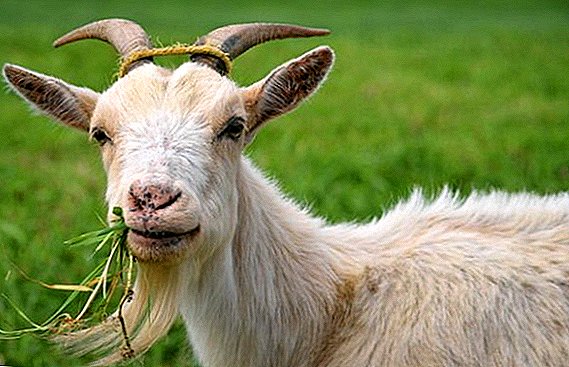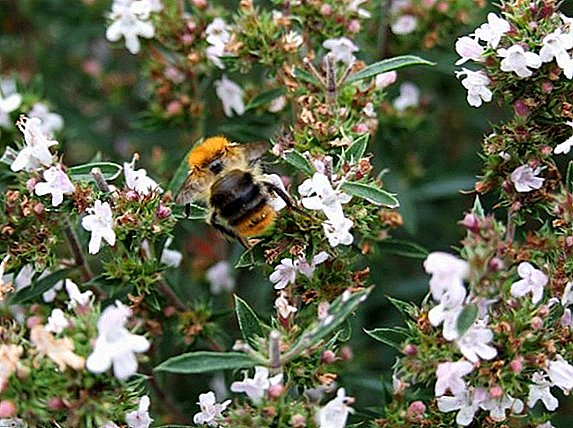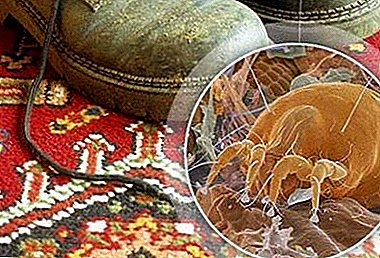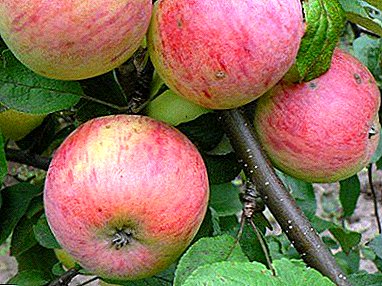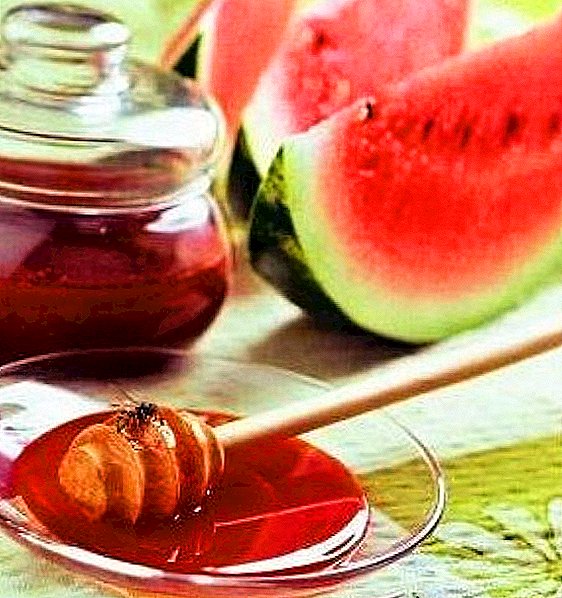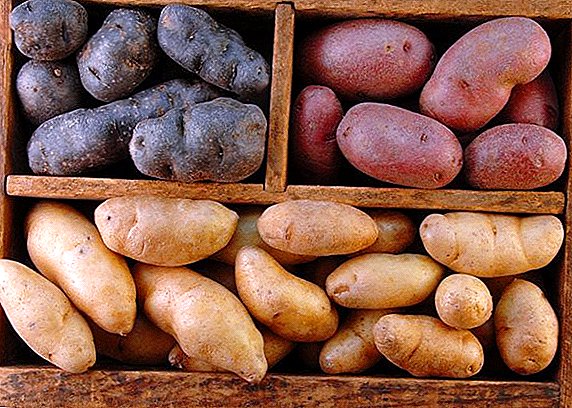 Vriesia flower is a wonderful decoration of any home, and since the plant’s birthplace is South American forests then for optimal growth and development requires appropriate conditions, which will tell this article. You will learn how to create the necessary microclimate for your pet, who will appreciate the efforts and will delight you with beautiful flowers.
Vriesia flower is a wonderful decoration of any home, and since the plant’s birthplace is South American forests then for optimal growth and development requires appropriate conditions, which will tell this article. You will learn how to create the necessary microclimate for your pet, who will appreciate the efforts and will delight you with beautiful flowers.
Conditions for keeping and growing
Vriesia, or a flower with a red feather, grows and develops in special conditions that correspond to its natural area of growth. To get a healthy flowering plant with the possibility of reproduction, you need to take care of the basic conditions of the content.
Lighting
Friesia (another name for the plant) prefers diffused sunlight. The flower should be placed on the western or eastern side during the warm season, and when it gets cold it should be moved to the south window. It is worth remembering that direct sunlight causes a burn to the plant, so no matter what side the pot will be on, the leaves must be protected from direct rays. 
Important! The morning or afternoon sun contributes to the blooming of vriezia.
Temperature
Vriesia requires a constant uniform temperature of the content, with which the difficulties of growing the plant are associated. In spring and summer, the temperature should be in the range of 24-26 ° С, in the autumn-winter period - at the level of 18-22 ° С. Soil temperature should not fall below 18 ° C, otherwise the root system will get hypothermia.
Coleus, anthurium, balsam, stromant and some types of begonias, as well as vriezii, are heat-loving plants, so it is important for them to provide a moderate temperature for growing.
Soil and pot
Soil for variezii is quite important, so you need to either buy in a flower shop, or try to find the necessary components yourself. The first option involves the purchase of soil mixture for bromeliads, which is the best fit for the plant. If you want to make a soil mixture yourself, then you will need leaf humus, peat and chopped pine bark in equal proportions. 
Important! In no case do not use the garden soil, which is teeming with pathogenic bacteria and microorganisms.As for the pot, the preference should be given to the wide and low variants, since the root system of the Phriesias is poorly developed, and it is much easier to heat a small layer of soil.
Care tips for vriesia
Once you have achieved optimal conditions of detention, it is worth remembering about caring for the plant. Consider how to care for vriesia.
Watering
Vriesia is distinguished by a special method of irrigation, which implies irrigation of a deciduous funnel. It is worth remembering that in the warm season (spring - summer) the water in the outlet should always be, regardless of the humidity. It is necessary to renew stagnant water at least once a month. As soon as the temperature falls below 20 ° C, the funnel must be dried and wiped. Water should be at room temperature, have a medium or slightly acidic pH level.
In summer, the substrate should always be slightly wet. In winter, watering is carried out extremely rarely to prevent the soil from drying out. 
Air humidity
The flower loves the increased air humidity - about 70%. This level of moisture is achieved by constant spraying from a spray bottle. Use need warm soft water. However, it is worth remembering that if the temperature in the room drops below 20 ° C, then it is impossible to spray Freesia. Humidity can be increased by using wet gravel, which is placed in the pan.
Important! Do not wet inflorescence during spraying.
Top dressing
Vriesia - quite a capricious plant, therefore, its flowering directly depends on fertilizing.
Immediately it should be said that it does not make sense to do root dressings of the plant, since the root system performs a fixing function rather than a full-fledged organ. It is for this reason that all dressings are poured in liquid form into the foliar funnel.
For these needs, it is better to purchase a special fertilizer for bromeliads, but if it is not available, you can take any other top dressing for flowering houseplants (a good option would be to feed orchids). 
From April to October, once every 15 days should be fed Vriezii. Fertilizer is diluted in water and poured into the outlet.
Important! If a universal fertilizer for flowering plants is used for top dressing, then the dosage should be halved.
Flowering Vriesia
Many novice florists are interested in the question of how vriezia blooms and when it comes time to bloom.
If the plant felt good, all the necessary conditions were created for it, then bloom should start in summer. In the event that you purchased a flower in spring or summer, and he did not have time to settle down, then you will have to wait until next season. Also, flowering can affect any drafts, lowering the temperature below the minimum and sunburn. These factors can both delay flowering for a short time, and "move" it to better times.
Vriesia is demanding to environmental conditions, there is another reason why it does not bloom. Stimulation of flowering causes the accumulation in the air of ethylene - gas, which appears at the time of fruit ripening. To help the Vreezia bloom, you need to put a ripe banana fruit or a few overripe apples near it and cover the plant with the food film. The concentration of ethylene will do its work, and if there are no other reasons, then vriezia will bloom. 
Did you know? Vriesia grows in the humid tropics and subtropics of Central America to Argentina and Brazil at an altitude of up to 2500 m.
How to transplant vrieziyu
If you initially carried out a proper planting of vriezia, then you can forget about transplanting for 5 years, as the plant does not require frequent changes of the pot or substrate (we recall the role of the root system).
In the event that the pot became small, the transplant of a flower should be “assigned” to spring. During the whole process it is worth being careful with the roots, since the slightest damage will lead to various diseases. When transplanting, we change the soil to a new one, retaining all its properties. That is, if you previously took the soil for orchids, then during transplantation you need to take the same one. Remember to put a drainage layer on the bottom of the pot.
After immersion in a new container, it is necessary to gently sprinkle the roots with earth, without burying the root neck, otherwise it will begin to rot, and the flower will die. 
At this transplant vriezii over. After all the manipulations, moisten the soil well and put the pot in the same place.
Breeding methods
Vriesia is fastidious in terms of flowering, but the same applies to flower reproduction.
Propagate the plant in two ways: seeds and children. Children are young shoots that form at the base of the plant after the death of the rosette. That is, in the first and in the second case the opportunity to propagate a flower appears only after flowering. If there was none, then there is no place to get seeds / shoots.
- Vegetative method of reproduction (shoots). When the children reach 1/3 of the length of the mother plant, they should be cut (along with the roots) and planted under the film in the appropriate substrate (leafy ground, pine bark, sand in equal proportions). In such conditions, young plants should be kept for about 15 days, after which the film is removed and transplanted into separate containers.
Important! Once a day, a mini-greenhouse with young Friesias needs to be aired and moistened.
- Generative method of reproduction (seeds). The collection of inoculum is carried out after disclosure of the testis. Next, the seeds are washed in a very weak solution of potassium permanganate, dried and sown in the following mixture: fern fiber, sand, sphagnum in equal proportions (in extreme cases, you can use a mixture of peat moss and sand or sow the seeds in peat).
Seeds also multiply: plumeria, blueberries, Indian onions, lisianthus, clivia, adenium, arugula, mountain ash (chokeberry) Aronian, Erica, karyopteris, hellebore, fittonia, canna, fennel and aglaonemoya.

Next, the container with the seeds planted cover film and raise the temperature to 22-24 ° C to achieve germination. As in the case of vegetative propagation, the mini-greenhouse needs to be ventilated and watered daily. The first shoots will appear no later than the 20th day from the time of sowing. Then it will take another 3 months for the young plants to ripen, and they could be planted in separate pots using the usual soil for bromeliads.
Did you know? Vriesia, if we talk about signs and superstitions, according to a flower horoscope is the flower of Libra, with which it brings peace and tranquility.
Diseases and pests: prevention and treatment
Let's start with external signs, which can reveal the presence of the disease in the plant.
If the vriezia curls, darkens and dries the leaves, then - the air in the room is too dry. Bring moisture to the required indicators, change the water in the outlet, and the plant will recover.
Brown spots on the leaves appear due to sunburn. Transfer the pot to the shade for a few days, and the vriezia will recover.
Lag in growth and development is the result of hypothermia, excess moisture in the soil or outlet, or insufficient air humidity. It is "treated" by the elimination of negative factors. 
If vrieseia is not completely bloomed, and the flower spike began to rot, what to do in this case? Rotting occurs if the temperature in the room is below 20 ° C, and there is a large amount of moisture in the funnel. It is also worth remembering that after flowering, except for the flower itself, the whole plant dries up, and then renewal occurs. That is, if you started to dry Vriesia after flowering without any reason, then everything is in order, it should be so.
The formation of black sooty film on the leaves must be controlled and cleaned in time with a swab dipped in soapy water. Such a "raid" does not allow the plant to breathe normally and weakens it.
Also, feliesia can be struck by scale insects, spider mites and rootworms. The presence of scale insects is determined by the yellow twisted leaves, as well as a lag in growth. Destroy the pest need "Karbofos" or "Aktellikom." If there are not a lot of shields, you can wipe the plant with an alcohol swab.
Spider mites leave behind a barely noticeable spider web and "transparent" leaves. The fight is the same as in the case with the scutes.
Root insects lay eggs at the base of Vriezii, because of which the flower rots and dies. Treat for pest need "Malophobia".
Did you know? The genus Vriesia (Vriesia Lindl.) Has, according to various sources, from 150 to 250 species of plants of the Bromeliad family.This beautiful flower is demanding to the conditions of detention and good care, however, by creating the desired microclimate for it, you will see how effective Friesia can be, not only at the time of flowering, but also during rapid growth.



